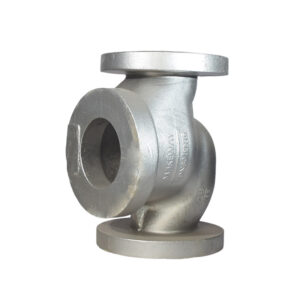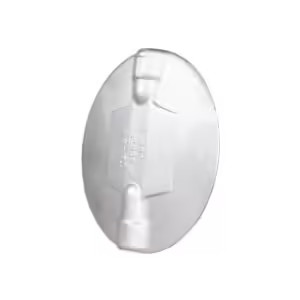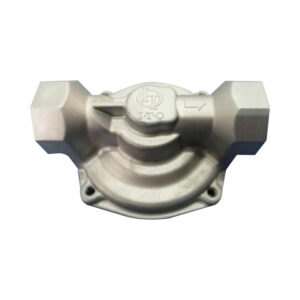6 kritische Fehler bei Ventilzubehör
Willkommen auf meinem Blog!
Ich freue mich sehr, dass du hier bist! Bevor wir uns in die Inhalte vertiefen, würde ich mich freuen, wenn du mir auf meinen Social-Media-Plattformen folgst. Dort teile ich zusätzliche Einblicke, vernetze mich mit unserer großartigen Community und halte dich über die neuesten Nachrichten auf dem Laufenden. So bleibst du in Verbindung:
📘 Facebook: Shanghai Leierwo Industriehandel Co., Ltd.
Lassen Sie uns gemeinsam auf diese Reise gehen! Ich hoffe, Sie finden die Inhalte hier nicht nur aufschlussreich, sondern auch inspirierend und wertvoll. Los geht‘s!
Inhaltsverzeichnis
Einführung
In industrial systems, the performance and longevity of valves are not solely determined by the core valve mechanism. Just as crucial are the Ventilteilzubehör that support, enhance, and protect valve operations. These components—such as gaskets, fasteners, seals, actuators, and fittings—are often overlooked, yet they play a vital role in ensuring system integrity and efficiency.
Incorrect selection or poor management of these components can lead to system failures, costly downtime, and even safety hazards. Therefore, understanding how to choose, install, and maintain valve part accessories is essential for engineers, technicians, and plant managers alike. In this article, we will explore six of the most critical mistakes people make regarding these accessories and provide guidance on how to avoid them.
Whether you work in oil and gas, water treatment, pharmaceuticals, or manufacturing, this comprehensive guide will help you improve system performance and reduce risk by giving valve part accessories the attention they deserve.
Fehler 1: Verwendung inkompatibler Valve Part Accessories
One of the most damaging errors in industrial environments is the use of accessories that are not compatible with the valve or the media being handled. This mistake typically arises from either a lack of knowledge or an attempt to cut costs. Unfortunately, using the wrong accessory can lead to corrosion, leaks, or premature failure.
Common Compatibility Issues:
- Material mismatch between valve body and accessories
- Incorrect pressure rating of fittings and gaskets
- Seal materials that degrade under temperature or chemical exposure
To avoid these issues, engineers must evaluate each accessory’s chemical resistance, temperature tolerance, and pressure capacity in relation to the system’s operating conditions. Choosing the right valve part accessories may take more effort, but it significantly reduces long-term risks.
Mistake 2: Neglecting Regular Maintenance of Valve Part Accessories
Maintenance schedules often focus on main valve components while ignoring the accessories. However, small issues such as a worn-out gasket or misaligned actuator can escalate into major system malfunctions. Valve part accessories require routine inspection, lubrication, and, when necessary, replacement.
Why Maintenance Matters:
- Prevents leakage and contamination
- Reduces downtime and emergency repairs
- Increases service life of the entire valve assembly
Establishing a preventive maintenance routine is a smart, cost-effective way to avoid the financial impact of unexpected failures. Make sure every inspection includes all auxiliary parts.
Mistake 3: Improper Installation of Valve Part Accessories
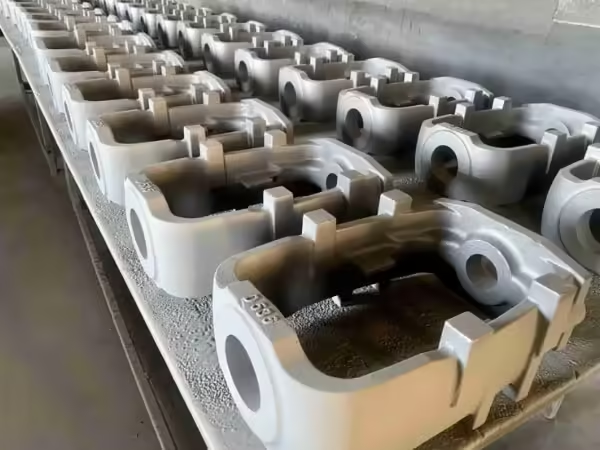
Even the best quality valve part accessories will fail if they are not installed correctly. This mistake is especially common when systems are assembled by undertrained staff or without proper supervision. Improper torque, misaligned flanges, or reversed fittings can damage both the accessory and the valve itself.
Installation Best Practices:
- Always follow manufacturer torque specifications
- Use alignment tools when mounting actuators or brackets
- Verify gasket seating to avoid uneven compression
Training and documentation go a long way toward minimizing errors during the installation of valve part accessories. Skilled labor combined with checklists ensures correct installation every time.
Mistake 4: Ignoring the Impact of Environment on Valve Part Accessories
Environmental factors can severely affect the performance of valve part accessories. Exposure to high humidity, extreme temperatures, saltwater, or corrosive chemicals can degrade components faster than anticipated. Without proper environmental consideration, even high-end accessories will wear out prematurely.
Environmental Risk Factors:
- Outdoor exposure without protective coatings
- Steam or heat causing seal failure
- UV degradation of non-metallic parts
Selection of suitable materials and protective finishes is crucial. For instance, stainless steel or coated alloys can provide additional durability in corrosive settings, while high-temp elastomers are more appropriate for thermal applications.
Mistake 5: Overlooking Quality Standards in Valve Part Accessories
Procurement decisions based on price alone can result in acquiring substandard accessories. In today’s global market, not all manufacturers adhere to the same quality standards. Using uncertified or non-compliant valve part accessories exposes your operations to significant risk.
Certification to Look For:
- ISO 9001 for manufacturing quality
- ASME standards for fittings and components
- API certifications for oil and gas applications
Low-quality components often come with hidden costs—higher failure rates, more frequent maintenance, and increased downtime. Investing in certified valve part accessories ensures long-term reliability and compliance with industry regulations.
Mistake 6: Failing to Track and Manage Inventory of Valve Part Accessories
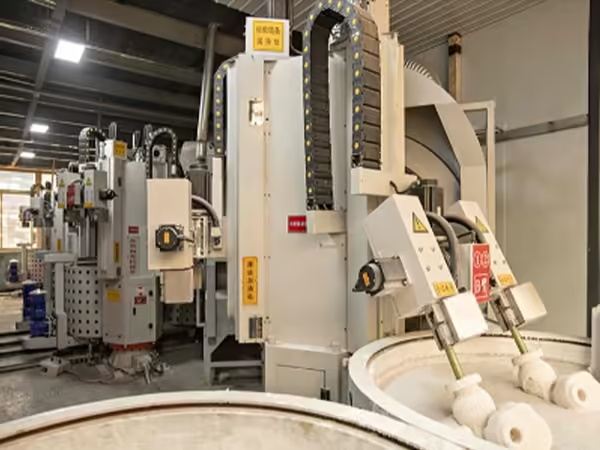
In many industrial settings, valve part accessories often don’t receive the same level of attention in inventory management as larger, more expensive equipment. This oversight can lead to a variety of operational challenges, especially when it comes to maintenance and repair. Without proper tracking, companies can face significant delays, increased costs, and safety risks.
When accessories are not carefully inventoried, there is a higher likelihood of running out of critical parts at the most inconvenient times, such as during scheduled maintenance or in the middle of an emergency. Not only does this disrupt operations, but it can also lead to the wrong parts being ordered, increasing the likelihood of downtime and inefficiency.
Key Inventory Issues:
- No real-time tracking system for accessories
- Relying on memory instead of records
- Stockpiling the wrong sizes or materials
To mitigate these inventory issues, it’s essential to implement a more structured and organized inventory management approach. Even a basic inventory system—whether it’s a simple digital spreadsheet, specialized software, or an integrated inventory control system—can significantly improve operations.
Comparative Table: Effects of Common Mistakes
Here is a summary of the impact that each of these mistakes can have on system performance and safety:
| Mistake | Risk Level | Potential Consequence | Prevention Strategy |
|---|---|---|---|
| Using incompatible accessories | Hoch | Corrosion, leaks, system failure | Match materials and ratings properly |
| Skipping maintenance | Hoch | Emergency shutdowns, costly repairs | Schedule regular inspections |
| Improper installation | Medium | Seal damage, performance issues | Train personnel and use correct tools |
| Ignoring environmental effects | Medium | Premature wear, accessory failure | Use protective materials and coatings |
| Choosing low-quality accessories | Hoch | Frequent breakdowns, non-compliance | Buy certified and tested components |
| Poor inventory management | Medium | Delays, wrong parts, emergency downtime | Track inventory and usage regularly |
Abschluss
Valve part accessories are the unsung heroes of fluid control systems. When selected and managed properly, they can significantly enhance the reliability and performance of industrial valves. Unfortunately, many businesses still overlook their importance until failures occur.
By avoiding the six critical mistakes outlined above—such as improper installation, ignoring environmental factors, or neglecting maintenance—you can reduce unplanned downtime, increase safety, and ensure long-term system efficiency.
Treating valve part accessories as strategic components rather than afterthoughts helps your entire operation run smoother and more cost-effectively.
Häufig gestellte Fragen
What are the most essential valve part accessories?
The most essential accessories include gaskets, O-rings, bolts, actuators, flanges, and stem seals. Each plays a specific role in maintaining a secure and functional valve system. The importance of each one may vary depending on the system type and pressure conditions.
How often should valve part accessories be replaced?
Replacement schedules depend on material type and operating conditions. For example, rubber seals might need to be changed every 6–12 months in high-temperature systems, while metal fittings can last several years. Regular inspections help determine exact timelines.
Can standard accessories fit all valve types?
What are the most essential valve part accessories?
The most essential accessories include gaskets, O-rings, bolts, actuators, flanges, and stem seals. Each plays a specific role in maintaining a secure and functional valve system. The importance of each one may vary depending on the system type and pressure conditions.
What industries use valve part accessories the most?
These accessories are widely used in oil and gas, water treatment, HVAC, chemical processing, pharmaceuticals, and manufacturing. Any industry that requires fluid control depends heavily on reliable accessory components.
How can I ensure the accessories I purchase are high quality?
Look for components that meet international quality standards, such as ISO or ASME certifications. Request material test reports, and avoid suppliers with no track record or documentation. Partnering with reputable manufacturers can make a big difference.
Produktkategorien
- Ventilteile
- Wasserpumpenteile
- Lagergehäuseteile
- Druckgussteile
- Pumpenprodukte aus Edelstahl
- Pumpenprodukte aus Gusseisen
- Ventilteile für den Automobilgebrauch
- Autoteile
- Ventilteile für den zivilen Gebrauch
- Vakuumpumpenteile KF


